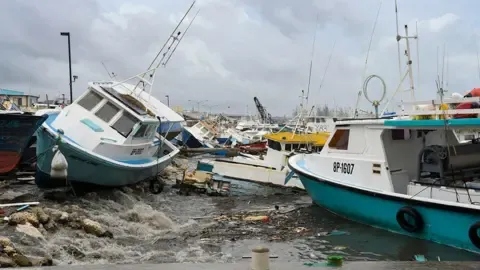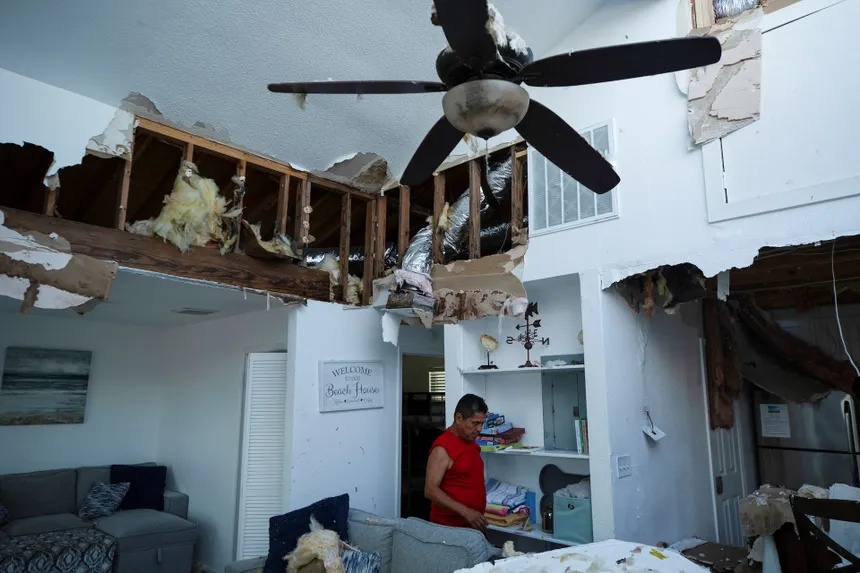Tropical Storm Beryl made a deadly landfall in southeast Texas on Monday, bringing with it howling winds and torrential rains that left at least three people dead, knocked out power to over 2.5 million homes and businesses, and closed oil ports. The storm had already carved a path of destruction through the Caribbean as a category 5 hurricane, killing 11 people, and then continued on to Mexico’s Yucatan peninsula as a category 2 hurricane.
As Beryl approached Texas, residents had rushed to board up windows, stock up on essential supplies, and evacuate from low-lying areas. But despite warnings from officials, many people remained in their homes, only to find themselves cut off from the power grid and struggling to survive in the midst of the storm’s fury.
The storm surge and heavy rainfall caused widespread flooding, with hundreds of trees knocked down and dozens of cars stranded on flooded roadways. Oil-refining activity slowed, and some production sites were evacuated, as the state’s ability to produce crude oil and natural gas was severely impacted.
As Beryl continued to make its way inland, the National Hurricane Center warned of “life-threatening storm surge and heavy rainfall” and issued a tornado watch for an area covering over 7 million people. The storm was expected to weaken into a tropical storm and then a depression as it moved inland, but its impact on the region was far from over.
Residents of cities and towns such as Galveston, Lake Jackson, and Freeport reported strong gusts and torrential rain, with some areas experiencing over 12 inches of rain. The city of Houston was particularly hard hit, with roads blocked by fallen trees and major freeways rendered impassable.

As the storm passed, crews were busy rescuing those stranded by the floodwaters, and officials were working to restore power and reopen roads. Schools were closed, and flights were canceled, as the full extent of the damage became clear.
The storm’s arrival was marked by concern about the potential for loss of life, and officials were still trying to determine exactly how many people had heeded warnings to leave before the storm’s arrival. “One of the things that kind of triggers our concern a little bit, we’ve looked at all of the roads leaving the coast and the maps are still green, so we don’t see many people leaving,” said Dan Patrick, the state’s lieutenant governor.
As Beryl moves on, its aftermath is likely to be felt for weeks to come. The storm’s arrival is just the beginning of what is expected to be a hyperactive hurricane season, with eight to 13 hurricanes expected before November. Scientists warn that exceptionally hot sections of the Atlantic Ocean, caused by the burning of fossil fuels, have helped supercharge storms like Beryl, and that this is not the last we’ve seen of such devastating weather events.

